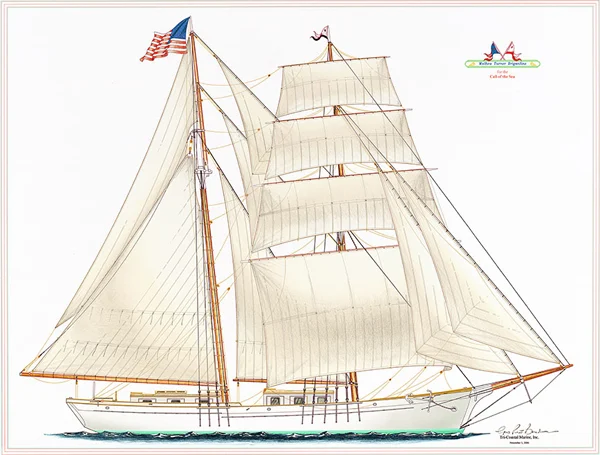The San Francisco Bay Area, besides being a major hub for cutting edge technologies, is also a huge force in the area of water-based activities, be it recreational or commercial.
Its history in this area is also very, very rich, and one non-profit is looking to pay homage to this by building from the ground up a $5 million, sustainable wooden tall ship which combines green technologies from the 19th and 21st centuries.
Educational Tall Ship is building a new, 132-foot brigantine called Matthew Turner that’s named after a one time ship builder considered to be the most prolific of his age. The new ship is said to have
many characteristics that can be found in Mr. Turner’s designs: a relatively flat sheer, fine entry, straight run, and little drag in the keel. The sail plan mimics his traditional brigantine rig right down to the ringtail sail.
It is from there though that design specifications come into more modern times, whether it is to meet USCG passenger carrying requirements or additions which give the ship a bit more of a 21st century feel.

image via Educational Tall Ship
Chief among the next generation green technology aboard the Matthew Turner, which is the the largest wooden ship constructed in the San Francisco area in nearly 100 years, is a regenerative power system that “serves as a secondary method of steering the vessel (twin screw) in addition to giving…the capability to motor home when the wind dies.” This system is quite fascinating, propelling the boat via
AC electric motors directly connected to the propeller shafts [that draw] energy from large battery banks. When the ship is sailing, the energy of the passing water causes the propellers to rotate, which, in turn, causes the electric motors to become generators that re-charge the batteries onboard. Significant electrical energy is created as sailing speeds increase.
The wooden ship will have some electrical power needs, as a combination of LED lighting, induction cooking and low energy navigation and appliances will use less than 50 kWh per day, which is on top of what ever other energy is called for by the other electronics on board. It is believed though that the regenerative power under sail, in combination with onboard generators fueled with recycled vegetable oil and dockside charging from solar panels and wind generators, will be enough to achieve “energy self-sufficiency” and technically let the ship operate on what reportedly should be a carbon neutral basis.
In other areas of sustainability, the Matthew Turner will, for example, make use of materials like local Forest Stewardship Council Certified lumber. This includes Douglas fir harvested from FSC certified forests in Mendocino County that was donated by The Conservation Fund, and FSC certified Oregon White Oak supplied by Sustainable Northwest that will be used for rigging parts, hatches, furniture and the rudder.
Once launched, the mission of the Matthew Turner will be to “act as a living laboratory for students to learn to sail a tall ship while studying marine science and ecology.”






